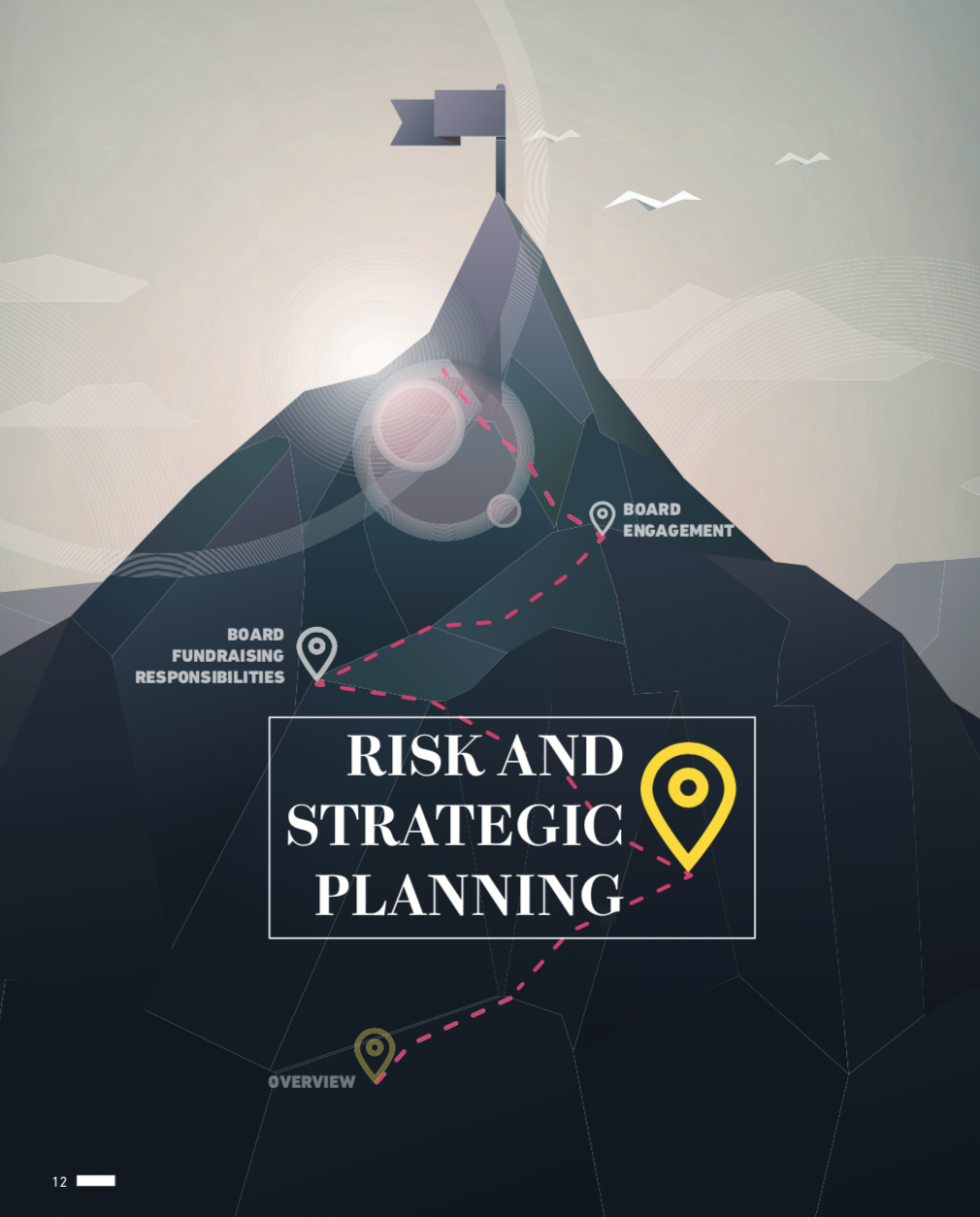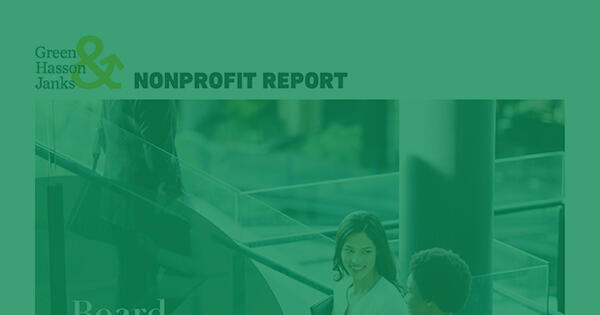









Nonprofit boards are being challenged in new ways, and board governance is more important today than ever. In this year’s whitepaper, GHJ took a closer look at engaging the board and the board’s responsibilities around governance, including strategy and risk, advocacy and fundraising.
A good strategic plan casts a wide net and includes tactics that might be outside the board’s comfort zone. This year’s subject matter experts advise to include such tactics as alternative funding sources, increasing the nonprofit’s visibility via marketing, conducting outreach to leaders in the community and partnering with other nonprofits to reduce costs and increase impacts.
Fundraising is the hardest and most important issue for boards, but without it, most nonprofits would cease to exist. However, just 25 percent of this year’s survey respondents said the majority of their boards were actively involved in fundraising. A board’s give or get policy is a never-ending topic of debate, but the subject matter experts agree that there should be a defined policy, and it should be enforced.
Good donor management software can take a nonprofit from infancy to maturity. It will help grow and manage relationships with funders and helps a nonprofit operate more efficiently.
Many people have served on boards where some (or all) of the board members did not fully participate. Lack of board engagement could be because they have been there a long time and feel they have done their duty, it could be a mismatch between skills and needs or it could be that the board member just wanted to list it on their resume. By playing to a board member’s strengths, organizations can not only increase engagement but also tap into a hidden resource.










